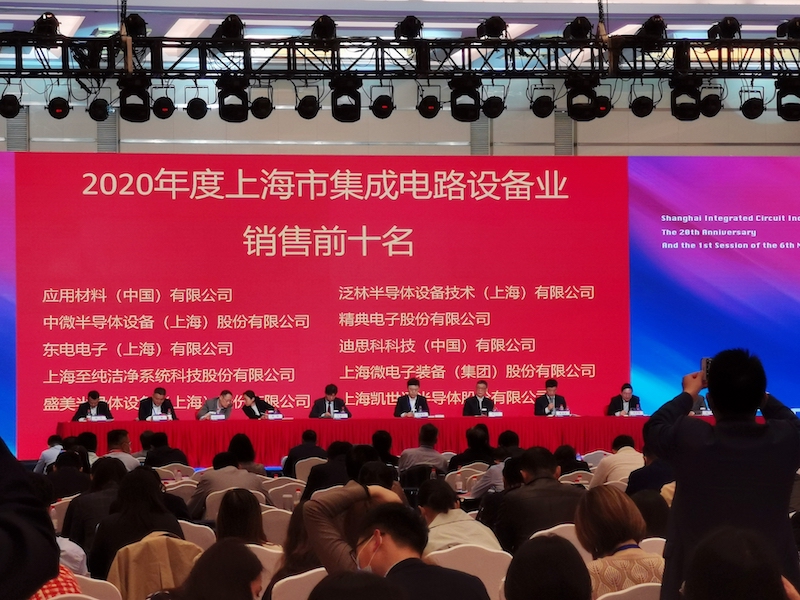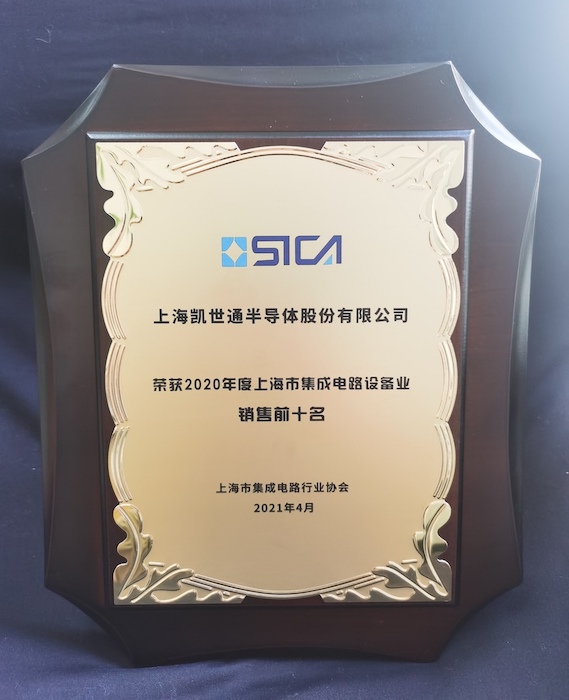@KYli bro they're trying to justify the TSMC Arizona investment which likely will become a white elephant project, the market is in China and had been sailing smoothly until the American intervene. Once Liu He accomplished his task which I know he would, Taiwan will rue the day that they traded their crown jewel for American empty promise and Ms Tsai need to held account for letting it happen, such traitorous bitch.
You are using an out of date browser. It may not display this or other websites correctly.
You should upgrade or use an alternative browser.
You should upgrade or use an alternative browser.
Chinese semiconductor industry
- Thread starter Hendrik_2000
- Start date
- Status
- Not open for further replies.
Wouldn't be surprised if some of these "14nm Kirin Chips" might accidentaly end up in Huawei Equipment.WoW!!! BYD Semiconductors and they are being FAB by SMIC!!!! a customer for SMIC 14nm chips!!!
from the VERDICT
BYD Semiconductor spinoff set for Shenzhen Stock Exchange start
17th June 2021 (Last Updated June 17th, 2021 14:54)
helloabc / Shutterstock.com
Share Article
Chinese manufacturing company BYD has announced that its board of directors have agreed to its spinoff, BYD Semiconductor, going public on the Shenzhen Stock Exchange’s ChiNext market. The company that the spinoff would not result in any changes in BYD’s equity structure, and BYD would still be the controlling shareholder of BYD Semiconductor.
Upon completion of the spinoff, BYD Semiconductor would continue working on its core business in the R&D, production and sale of power semiconductors, intelligent control units, intelligent sensors, and photoelectric semiconductors. While focusing on automotive-grade semiconductors, BYD Semiconductor will also develop chips for products like home appliance, new energy and consumer electronics in the future.
The company expects that the spinoff will increase returns for shareholders as the newly-established independent company can focus on its core products and services. In this case, that will be increasing BYD Semiconductor’s supply of insulated-gate bipolar transistor (IGBT) semiconductor technology, regarded as a core technology of electric and hybrid vehicles.
The subsidiary will also be given more autonomy to increase its client base across the automotive industry and benefit from increased economies of scale.
It said that the capital gain would be used for its primary business, including supplementing working capital, purchasing assets, hiring personnel and research and development, and other purposes approved by investors.
BYD has fully integrated system capabilities, from chip design, wafer manufacturing, assembly, testing and downstream applications.
According to GlobalData’s deals database, the company secured $266.17m in a funding round in May 2020. Investors include Sequoia Capital China, SDIC Innovation Investment Management and CICC Capital Management.
In June, BYD raised another $112.93m in its funding round, backed by Semiconductor Manufacturing International Corporation (SMIC), SK, Lenovo Group, BAIC Motor, Xiaomi and SAIC Motor, among others.
reported that previously BYD and Huawei had signed a cooperation agreement to build an automobile-level Kirin chip. Its first product was reported to be the Kirin 710A, which was previously mass-produced by SMIC using 14 nanometre process technology.
If BYD and can achieve the production of the chip, the Kirin 710A could become a landmark product that is produced with a self-reliant and self-controlled industrial chain from design, manufacturing, to packaging and testing.
BYD Semiconductor was established on October 15, 2004, formerly known as Shenzhen BYD Microelectronics. In 2007, BYD established an IGBT module production line and completed the sample assembly of the first electric vehicle IGBT module. In 2008, BYD spent 171 million yuan to acquire the Ningbo Zhongwei wafer foundry to add wafer manufacturing capabilities.
But better keep this a Secret or Ron Vara might get very upset.
@WTAN Sir you have my word...lol, and please let us know if the verification of the localized 14nm equipment is successful.Wouldn't be surprised if some of these "14nm Kirin Chips" might accidentaly end up in Huawei Equipment.
But better keep this a Secret or Ron Vara might get very upset.
Hendrik_2000
Lieutenant General
The road ahead is long and difficult but China will get chip independent Interesting video from difference frame of the world
China is catching up very rapidly. The first five months of 2021 saw a delivery of 140 billion chips in China's mainland, a 48.3% increase compared with 2020. For China, it still has a long way to go, but it will succeed at last.
China is catching up very rapidly. The first five months of 2021 saw a delivery of 140 billion chips in China's mainland, a 48.3% increase compared with 2020. For China, it still has a long way to go, but it will succeed at last.
The key breakthrough referred to in this link is mastery of high power million volt ion implantation. The hard part is the power output. Subsequent tweaking is much easier and inevitable given enough time and money. When they announced this was ready for >=28nm processes, they were already working on ion implantation at the 7nm node.
Hendrik_2000
Lieutenant General
English translationThe key breakthrough referred to in this link is mastery of high power million volt ion implantation. The hard part is the power output. Subsequent tweaking is much easier and inevitable given enough time and money. When they announced this was ready for >=28nm processes, they were already working on ion implantation at the 7nm node.
KST, a subsidiary of Wanye Enterprise, ranks among the "Top Ten Sales of Integrated Circuit Equipment Industry in Shanghai"
3583

Source: Wanye Enterprise
#万业#

04-26 10:09
On April 22, 2021, the 20th Anniversary Conference of Shanghai Integrated Circuit Industry Association and the Sixth First Member Conference will be held at the Shanghai International Convention Center. The purpose of this conference is to fully demonstrate the achievements of the development of Shanghai's integrated circuit industry in the 20th anniversary, and to commend typical enterprises that have achieved outstanding performance and made significant contributions in recent years. According to the announcement of the winners, Shanghai Kaishitong Semiconductor Co., Ltd. has entered the honor list and won the "Top Ten Sales of Integrated Circuit Equipment Industry in Shanghai in 2020".

(The top ten sales of integrated circuit equipment industry in Shanghai in 2020)
Shanghai Kaishitong is a holding subsidiary of Shanghai Wanye Enterprise Co., Ltd., and its current operating income mainly comes from self-produced ion implanters, ion implanter consumables and spare parts, as well as product and service customization and remanufacturing businesses. It is worth mentioning that in 2020, Beijing CST won a total of 4 IC ion implanter equipment orders, covering low-energy large beam current (heavy metals, ultra-low temperature), high-energy ion implantation and other processes, and Shanghai CST surpasses 7-nanometer ion implantation. The platform has passed customer verification and received acceptance. Relying on the sales growth support of ion implanter-related products and businesses, CST is nominated for the “Top Ten Sales of Integrated Circuit Equipment Industry in Shanghai in 2020” with high-quality companies such as Applied Materials, China Micro and Microelectronics, and Zhichun Technology.

As the only domestic listed company with ion implantation technology in all fields, Wanye Enterprise continues to increase its resource support for CST, enhance CST's technical research and development capabilities, and consolidate CST's core competitiveness in the field of integrated circuits. According to the company's 2020 annual report, Wanye Enterprise not only increased its R&D expenses by 671.05% year-on-year, but also implemented an equity incentive plan for the founding team and core employees during the reporting period to effectively enhance team cohesion and make it sustainable. At present, CST has a core team of world-class ion implantation equipment research and development, with strong technical strength, and some core indicators have exceeded similar foreign products.
At the same time, the company has stepped up efforts to promote the innovative development of integrated circuit ion implanters, and enhance market recognition of CST-related technologies and products. In August 2020, Shanghai CST's "Large Beam Ion Implanter Equipment and Process Research and Development" project won the first prize of Beijing Municipal Science and Technology Progress Award. In September 2020, the "R&D and verification of integrated circuit equipment radio frequency power system" project undertaken by Shanghai Kaishitong entered the special list of integrated circuit technology support in Shanghai's 2020 "Science and Technology Innovation Action Plan". In October 2020, Beijing Kaishitong won the iStellar-500 SEMI certification.
In the context of increasingly urgent demand for domestic substitution, CST, a subsidiary of Wanye Enterprise, is expected to discover more potential customers and fully benefit from internal synergies. Wanye Enterprise stated that it will continue to actively grasp the development opportunities of localization substitution, give full play to its own technological advantages, actively participate in various exchanges, cooperation and seminars organized by the association, strengthen internal and external linkages and resource sharing in the industry, and fill the gap in domestic industrial technology.
coolieno99
Junior Member
Also from that video which I find even more interesting:The road ahead is long and difficult but China will get chip independent Interesting video from difference frame of the world
China is catching up very rapidly. The first five months of 2021 saw a delivery of 140 billion chips in China's mainland, a 48.3% increase compared with 2020. For China, it still has a long way to go, but it will succeed at last.
at 0:22 "... nearly 30% of scientists in the chip industry are Chinese ..."
at 2:34 "... among nearly 5,000 patents owned by ASML, around 2,900 are developed by Chinese scientists ..."
I may be wrong, but I think China should do a great effort to bring back those Chinese people which are working in the USA. It will probably be much cheaper, even if China offers three times the salary those people are getting today. And it would speed the development of Chinese IC industry while reducing available talent to the US. It would be a win-win thing.Also from that video which I find even more interesting:
at 0:22 "... nearly 30% of scientists in the chip industry are Chinese ..."
at 2:34 "... among nearly 5,000 patents owned by ASML, around 2,900 are developed by Chinese scientists ..."
I think this is the way to go.
@coolieno99 bro it's the result of TSMC and ASML collaboration. Now the same thing will happen with Huawei, SMIC with SMEE and CETC, if we able to convinced Samsung to join let them used SMEE/CETC EUVL in China, it will accelerate its development giving TSMC a conundrum whether to join or be marginalized.Also from that video which I find even more interesting:
at 0:22 "... nearly 30% of scientists in the chip industry are Chinese ..."
at 2:34 "... among nearly 5,000 patents owned by ASML, around 2,900 are developed by Chinese scientists ..."
Hendrik_2000
Lieutenant General
Yup but China need to be flexible and allow dual nationality because at first people need to be convinced that working in China is ok, Or make it easier for overseas Chinese to get visa. Well now they already allow 5 years visa for ethnic chinese regardless of generation as long as you can proof that you are ethnic Chinese. A lot of people in Malaysia is now quietly moving back to their home provincesI may be wrong, but I think China should do a great effort to bring back those Chinese people which are working in the USA. It will probably be much cheaper, even if China offers three times the salary those people are getting today. And it would speed the development of Chinese IC industry while reducing available talent to the US. It would be a win-win thing.
I think this is the way to go.
- Status
- Not open for further replies.
